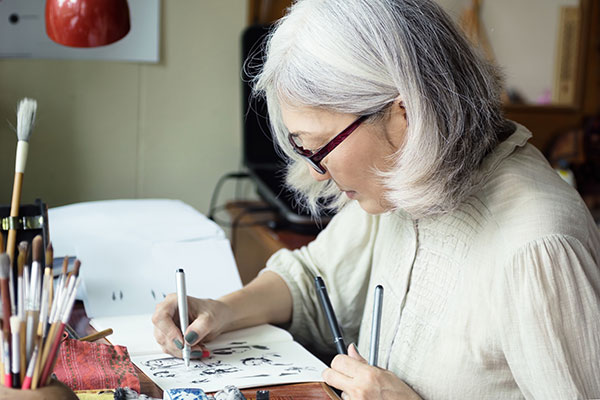Drawing a Picture Can Help You Remember Better

Many of us have ways to remember things – for instance when meeting someone new and learning their name, we may think of a person with the same name and make an association with the new person. We may repeat the name over and over until we think it’s stuck in our brain. So what is the best way to remember something?
A study from the University of Waterloo in Canada suggests that making a quick drawing can be an even better way to remember something. The research team conducted experiments on a group of college students, as well as on a group of older adults, to find out which techniques helped them best retain a memory. Participants were asked to either write out a word, listen to information about it, or to draw a picture of the item.
Both the college students and the older adults retained memories best by drawing—and, reports the team, “This effect was especially large in the older adults.”
As we grow older, normal changes in our brains can make it harder to remember things. Most of the changes are in areas of the brain that handle words and multi-tasking. But, reports the Waterloo team, “In contrast, we know that visuospatial processing regions of the brain, involved in representing images and pictures, are mostly intact in normal aging.”
This even holds true for people with Alzheimer’s disease and other memory loss. Brain imaging shows that the artistic abilities of people with dementia may be retained even when other abilities are lost. Study author Melissa Meade says, “We think that drawing is particularly relevant for people with dementia because it makes better use of brain regions that are still preserved, and could help people experiencing cognitive impairment with memory function. Our findings have exciting implications for therapeutic interventions to help dementia patients hold on to valuable episodic memories throughout the progression of their disease.”
Drawing and other forms of art also provide great brain exercise, and a boost to all-around good health. We’ve discussed the importance of the creative arts in helping memory in our blog. According a study authored by the late Dr. Gene Cohen, who was a pioneer in the study of aging and creativity, seniors who participate in an arts program report a higher overall rating of physical health, fewer doctor visits, less medication use, a reduction in falls, and fewer other health problems.
Art programs are available for people with every level of skill and ability who wish to participate, no matter their physical or cognitive challenges. Older adults can find art programs through senior living communities, community colleges, lifelong learning classes, senior centers, or the local parks and recreation department. Many art museums today offer outreach programs, some designed for people with memory loss.
![LifeCare Advocates [logo]](https://www.lcadvocates.com/wp-content/uploads/sites/270/2017/11/logo.png)